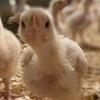Behavioral needs of chickens: Dustbathing





-
Duncan, I. J. H. (1998). Behavior and behavioral needs. Poultry Science, 77:1766-1772.
(https://doi.org/10.1093/ps/77.12.1766) -
Holt, R. V., Vas, J., Vasdal, G., Newberry, R. C. (2023). A buffet of litters - Broilers chickens behave differently according to litter type and freshness. Applied Animal Behaviour Science, 260: 105856.
(https://doi.org/10.1016/j.appanim.2023.105856) -
Kilpinen, O., Roepstorff, A., Permin, A., Nørgaard-Nielsen, G., Lawson, L. G., Simonsen, H. B. (2005). Influence of Dermanyssus gallinae and Ascaridia galli infections on health of laying hens (Gallus gallus domestics). British Poultry Science, 46(1): 26-34.
(https://doi.org/10.1080/00071660400023839) -
Lindberg, A. C. and Nicol, C. J. (1997). Dustbathing in modified battery cages: Is sham dustbathing an adequate substitute? Applied Animal Behaviour Science, 55: 133-128.
(https://doi.org/10.1016/S0168-1591(97)00030-0) -
Martin, C. D. and Mullens, B. A. (2012). Housing and dustbathing effects on northern fowl mites (Ornithonyssus sylviarum) and chicken body lice (Menacanthus stramineus) on hens. Medical and Veterinary Entomology, 26: 323-333.
(https://doi.org/10.1111/j.1365-2915.2011.0097.x) -
Merrill, R. J. N., Cooper, J. J., Albentosa, M. J., Nicol, C. J. (2006). The preference of laying hens for perforated Astroturf over conventional wire as a dustbathing substrate in furnished cages. Animal Welfare, 15(2): 173-178.
(https://doi.org/10.1017/S0962728600030256) -
Moesta, A., Knierim, U., Briese, A., Hartung, J. (2008). The effect of litter condition and depth on the suitability of wood shavings for dustbathing behaviour. Applied Animal Behaviour Science, 115: 160-170.
(http://dx.doi.org/10.1016/j.applanim.2008.06.005) -
Murillo, A. C., Abdoli, A., Blatchford, R. A., Keogh, E. J., Gerry, A. C. (2020). Parasitic mites alter chicken behaviour and negatively impact animal welfare. Scientific Reports, 10: 8236.
(https://doi.org/10.1038/s41598-020-65021-0) -
Olsson, I. A. S., Duncan, I. J. H., Keeling, L. J., Widowski, T. M. (2002). How important is social facilitation for dustbathing in laying hens? Applied Animal Behaviour Science, 79: 285-297.
(https://doi.org/10.1016/S0168-1591(02)00117-X) -
Petherick, J. C., Duncan, I. J. H. (1989). Behaviour of young domestic fowl directed towards different substrates. British Poultry Science, 30(2): 229-238
(https://doi.org/10.1080/00071668908417143) -
van Liere, D. W. and Bokma, S. (1987). Short-term feather maintenance as a function of dust-bathing in laying hens. Applied Animal Behaviour Science, 18(2): 197-204.
(https://doi.org/10.1016/0168-1591(87)90193-6) -
van Liere, D. W., Kooijman, J., Wiepkema, P. R. (1990). Dustbathing behaviour of laying hens as related to quality of dustbathing material. Applied Animal Behaviour Science, 26(1-2): 127-141.
(https://doi.org/10.1016/0168-1591(90)90093-S) -
Vestergaard, K. (1982). Dust-bathing in the domestic fowl - diurnal rhythm and dust deprivation. Applied Animal Ethology, 8: 487-495.
(https://doi.org/10.1016/0304-3762(82)90061-X) -
Vezzoli, G., Mullens, B. A., Mench, J. A. (2015). Dustbathing behavior: do ectoparasites matter? Applied Animal Behaviour Science, 169: 93-99.
(http://dx.doi.org/10.1016/j.applanim.2015.06.001)





















